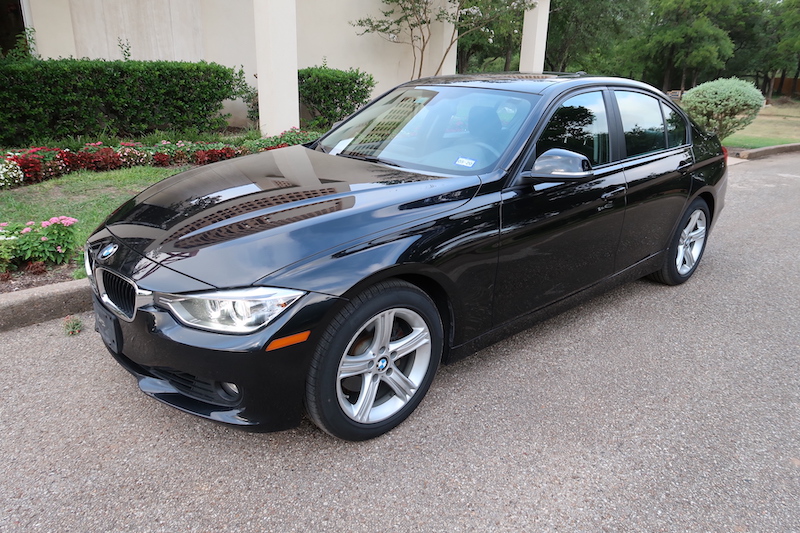Cars & Motorcycles
My Motor Vehicle History
Love to Drive
Cars were one of my earliest interests. Apparently, I would spend hours in my crib as a toddler looking out the window at the cars driving past. The first cars I was ever a passenger in were my dad’s 1962 Corvette and my mom’s 1965 Corvair Monza, and while both of these cars were pretty cool, I think my memories of them are mostly from pictures and home movies. By the time I was developing my earliest permanent memories, both cars had been traded in for a dark blue 1969 Ford LTD. Not nearly as interesting, although it did have a cool white interior and a 351 Windsor engine.
Despite being a confirmed “car guy” my entire life, my car history is fairly tame and certainly eclectic. Still, I find that less-than-spectacular vehicles often have a charm that can be hard to pin down and articulate to others. I also love to drive no matter what car I’m in. I’ve done a few cross-country road trips, and I’ll regularly go for drives around Austin just for the joy of driving. Following is a list of a few cars and motorcycles that I’ve either owned or driven over the years, along with a description of their positive aspects as well as their quirks.
I learned to drive on my dad’s old Datsun B210, a brown, two-door hatchback with a 1.4 liter inline 4-cylinder engine and a 4-speed manual transmission. These cars were extremely simple and reliable from a mechanical standpoint, and I learned some of the basics of the internal combustion engine by exploring the engine bay. Unfortunately, the combination of cheap steel and poor rust-proofing meant that the bodies started to rot almost immediately after purchase. My Dad bought this one used when it was a year old, and it already had a fair amount of rust. And the performance wasn’t great either, although the manual transmission helped a little with that.
We spent several weeks practicing in the elementary school parking lot at the bottom of our street when I was thirteen, and I slowly but surely got the hang of the clutch and the extremely heavy, non-power steering. Once I got my learner’s permit — on the day I turned 14, as it turns out, which was one perk of growing up in Kansas — I was occasionally allowed to drive it to school. I still remember how thrilling that was.
Despite being a very slow and somewhat difficult car to drive, it did grow on me over time. I used to take it on some of the back roads where we lived and pretend it was a 280Z. I’d love to have one of these again some day, but they’re virtually impossible to find anymore due to the aforementioned rust problems.
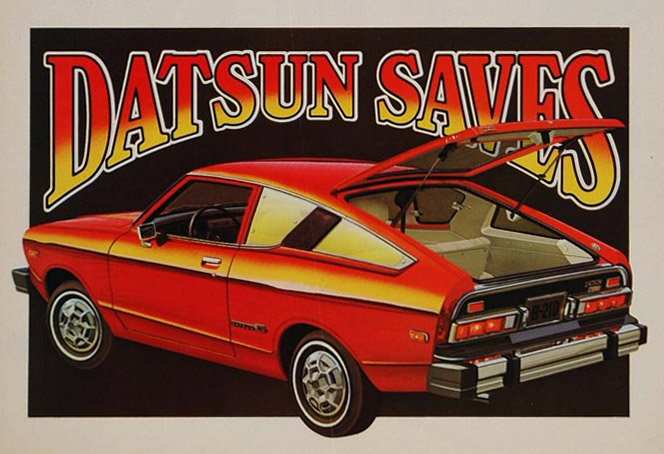
My uncle gave me his old 1979 Pontiac Grand Prix on my sixteenth birthday in 1985, and this was the first car that actually belonged to me. Unfortunately, I no longer have any pictures of the real thing, but I did love this car and still remember it like I just drove it to school yesterday. The two-tone silver paint and red velour seats were definitely classy with a capital “C.” 🙂 The styling hasn’t aged all that well over the years, but that’s probably true of most late 70s American cars.
This was also the first car that I ever drove that had a V8 engine, although it was a measly 301 with only 135 horsepower, which coupled with the automatic transmission meant it was pretty much slow as molasses. My friend and I took it out to a deserted rural road when I first got it, and he timed me while I accelerated from zero to sixty several times in a row. The fastest time I was able to get was just over 14 seconds, slow even by 80s standards. Still, it had a decent V8 rumble, was very comfortable with the adjustable electric seats, and overall I think it was a pretty good first car.
I sold this car to my parents when I left for college in 1987, and my sisters drove it for a few years until the engine eventually died. My dad drove it to a junkyard, and it threw a rod on the way there. He was able to make it to the entrance, but by that time there was oil all over the windshield. Needless to say, they didn’t give him anything for it.
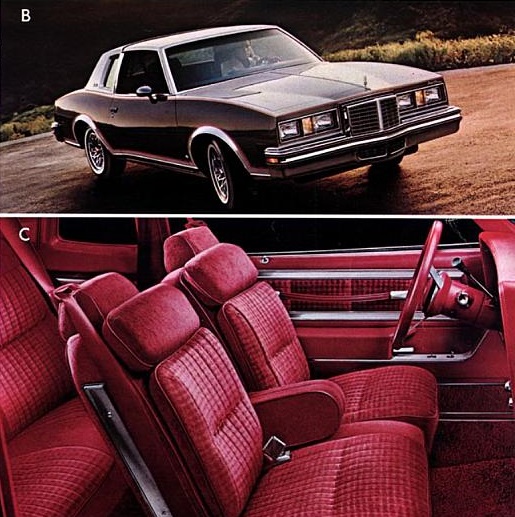
Okay, so there was nothing super compelling about this car when I bought it in 1992, aside from it being the cheapest new car I could find with a manual 5-speed transmission. I was a struggling musician at the time, and just needed something reliable to get to my job at the college bookstore every day without having to spend any extra money. The payments were manageable, there was a 3 year warranty, and I was able to spend any extra money (very little) on music equipment. At the time, I was just happy to have a car again after doing without one for four years in college. As a commuter car, it wasn’t bad, but man was the 2.2 liter 4 cyclinder engine slow going up hills. Loaded up with all of my stuff and heading uphill into California in 1995, I could barely get to 40 MPH. Still, this car was pretty reliable for the 8 years that I owned it, although I was definitely ready for something more fun to drive once I sold it.
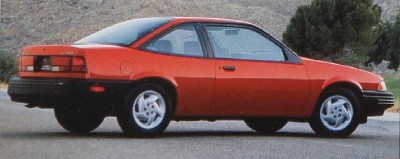
I bought my Jetta GL new in 2000 with the standard 2.0 liter four-cylinder engine and the 5-speed manual gearbox. I would have liked to have picked up one of the 1.8 L turbos that had just come out, but they were very pricey with the dealer markups. And they didn’t really offer that much more horsepower — 150 hp for the first generation turbos vs 135 hp for the base model. The only thing I didn’t like about my Jetta when I bought it was that it had the base model steel wheels with hubcaps. I ended up purchasing some of the correct 15″ alloys for my model on eBay, at which point I thought it looked pretty good.
My Jetta wasn’t particularly fast – about 10.5 seconds to 60 mph — but it was still a lot of fun to drive. You could throw it around corners and the manual gearbox was smooth. And I liked the way it looked when it was new, although the design didn’t really hold up all that well over time. They look pretty dated today. The interiors were nice, though, with very high-end materials. Much nicer than the Jettas I’ve rented in recent years, despite the better exterior styling on the newer models.
Unfortunately, the only picture I can find of the actual car is a shot of its posterior in front of my first house in Berkeley circa 2002. I didn’t put a ton of miles on this car, but I did get to spend a lot of time with it on windy roads in the Bay Area. Weekend trips to Santa Cruz down Route 1 were always a lot of fun too. I owned this car for 8 years, then traded it in on a new Infiniti G35S MT.
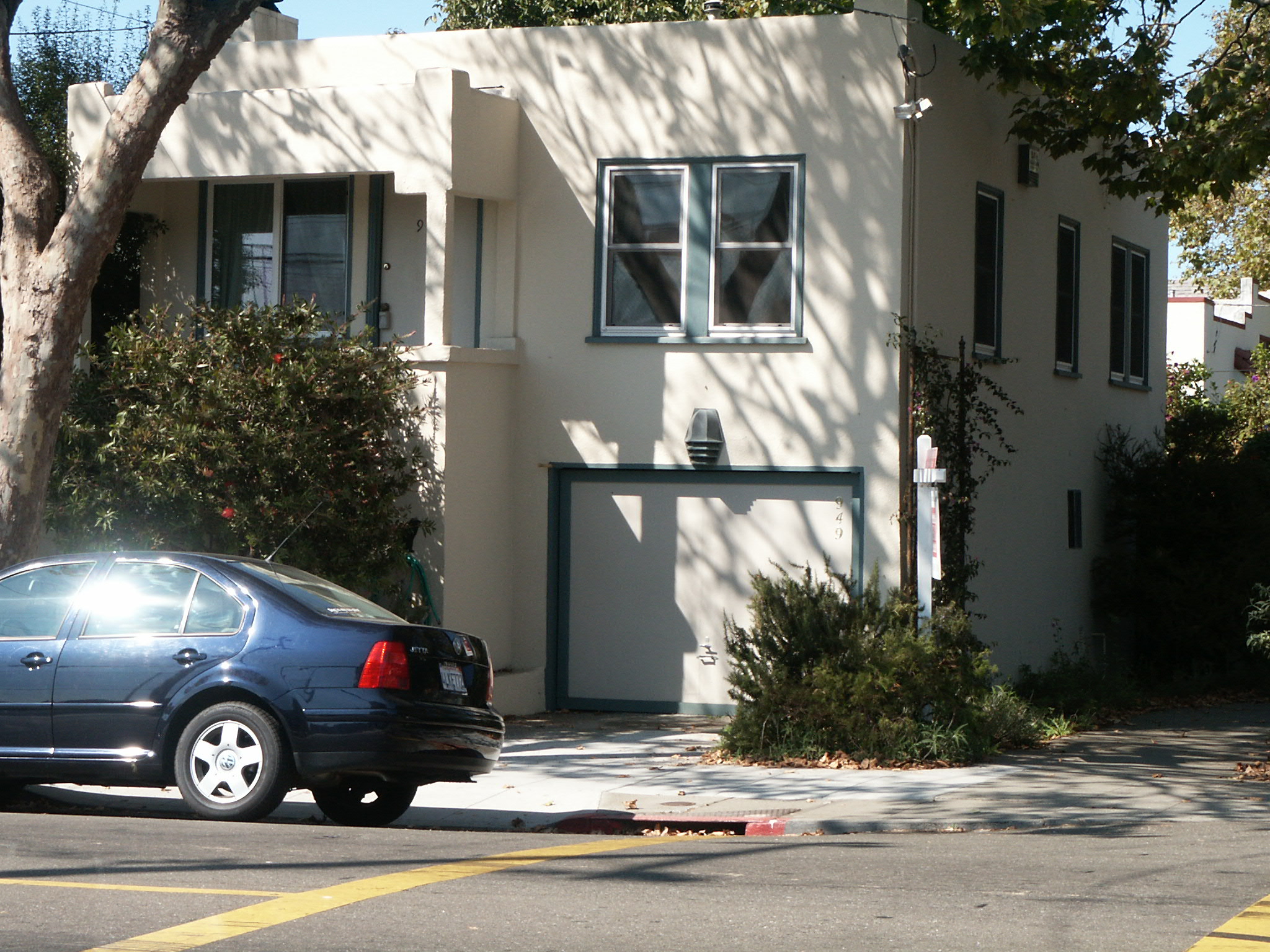
I bought this van from my parents for $1 in 2000, then proceeded to have a rebuilt 3.3 liter V6 installed to replace the clapped out engine. I needed a van to transport band equipment to gigs at the time, and this beast was plenty big to hold all of my band’s stuff. I always thought this car was pretty ugly and ungainly looking ever since my parents bought it new, but it was super roomy for a minivan and had the most comfortable seats of any car I’ve ever owned. I drove it from Maryland to California and kept it for the next 10 years, long past needing it on a regular basis. One of the few pictures I have of it is parked in front of a cabin we rented a few years ago in Mi Wuk, California. It was the perfect car for road trips like this.
While it was handy to have a large van to occasionally hauling people and stuff, it started to become an eyesore near the end of my ownership. I kept it parked on the side of my house where the neighbors couldn’t see all of the missing paint on the roof and hood. When the brakes went out and it required an $800 pump, I decided it was time to retire the 20 year old van and replace it with a used Honda Odyssey.
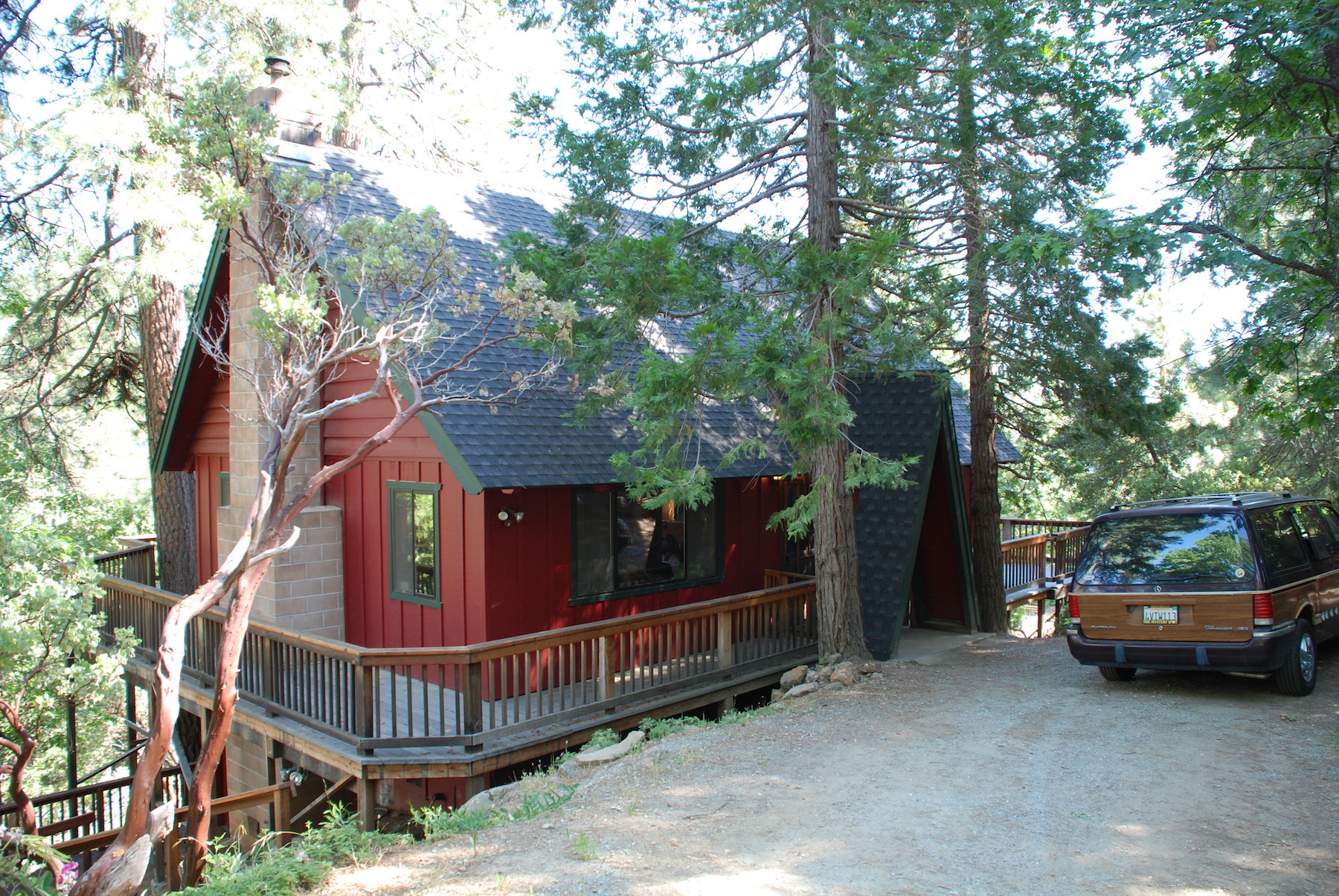
This was my first entry-level luxury sports sedan. I bought it new in January 2008 from the Infiniti dealership called Luxury Motors that used to be located in Oakland, CA before going out of business. It took a while to find the exact one that I was looking for: a “Sport” model sedan in black with black interior, 6-speed manual transmission, spoiler, and 19-inch wheels. I ended up getting a pretty good deal, though, after a week or so of negotiating.
A few months after purchasing it, I took it on a cross-country trip and had a blast barreling down a few lesser-known, two-lane highways. With 306 horsepower and great handling, it was hard not to exceed the speed limit, although the cruise control helped keep me in line on the long, straight stretches. This was definitely the most fun road trip I’ve ever taken in terms of driving.
While the G35 was a truly awesome car, like all cars there were a few little things I wasn’t crazy about. Most of them centered around the clutch and gearbox. The following items didn’t really detract from my driving enjoyment, but they were things that some of the other cars I’ve had over the years did a little bit better.
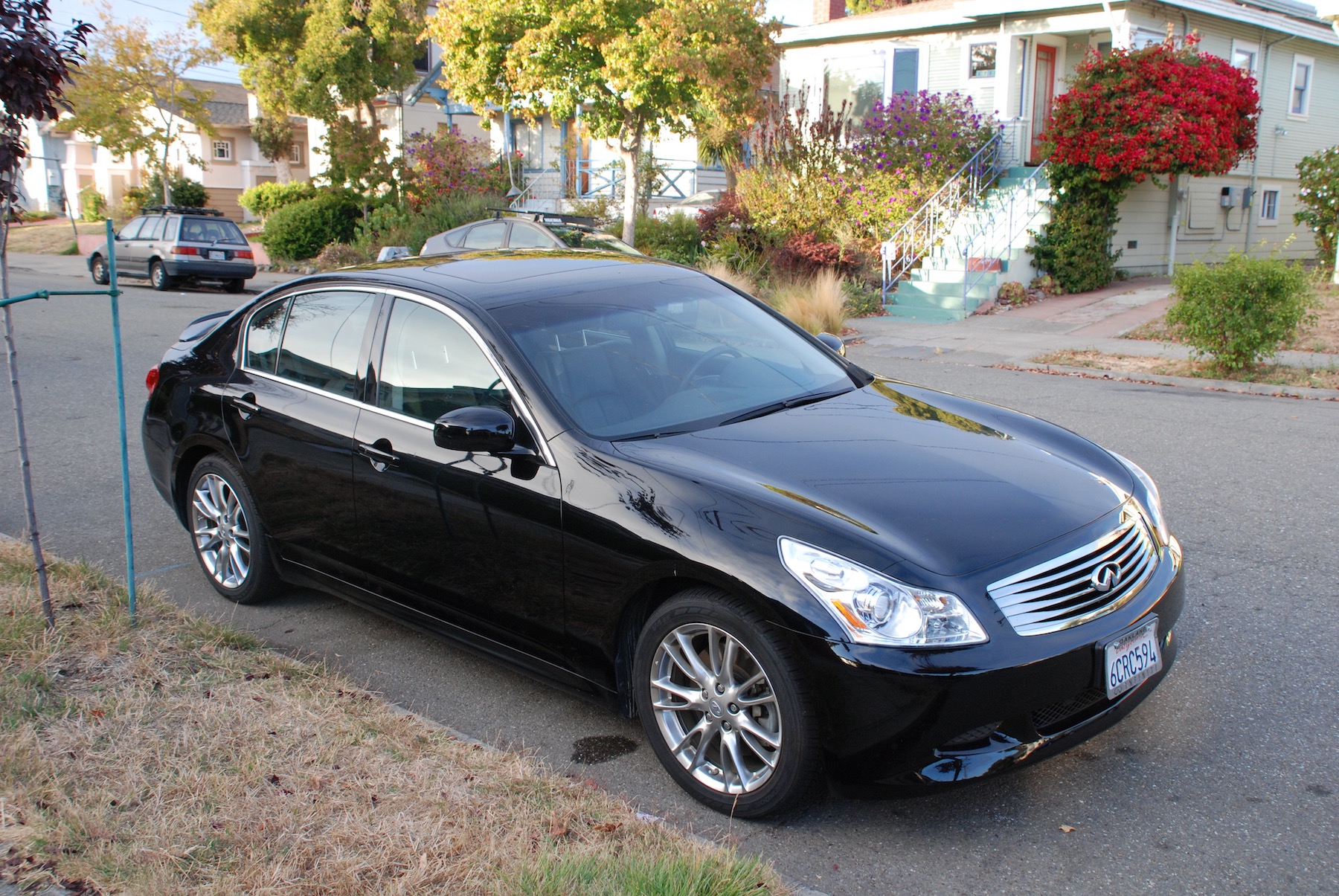
- The shifter wasn’t very well isolated from the transmission and vibrated pretty noticeably at all times.
- The shifter also wasn’t as smooth as I would have hoped. Quick shifts from first to second were almost impossible without a bit of grinding.
- The clutch had very little friction area, so it was hard to start from a stop without lurching — even after a lot of practice.
- While the handling was great on smooth roads, it tended to hop a little on bumpy ones.
- The sports seats that came with the S model were very narrow, and I could only fit with the adjustable sides all the way out. I’m 5’11” and weigh about 190 pounds, so I think a lot of other people would have trouble fitting at all.
Despite these small niggles, I loved this car and owned it almost 5 years, eventually selling it to make a down payment on our first house in Texas. The S models held their value very well as they were relatively rare — especially with the manual transmission — and became sought after by those wanting to race them. Hopefully, it hasn’t lived too hard of a life since I sold it.
This is the car my wife was driving when we first met. I had always liked the distinctive look of the 900 hatchbacks, even back in the 80s when they were widely considered to be ugly. I had never driven one, though, and my wife’s was pretty tired by the time I got to drive it. The automatic transmission was starting to slip, making an already slow non-turbo car a lot slower. Still, there was something very cool about this quirky coupe, with a very unique view out of the cockpit and some charming driving characteristics. And the hatchback made it extremely practical.
I drove this car to run errands for a few years — especially when the van was out of commission and I needed to haul something — and it was a lot of fun. We ended up donating it to charity before moving to Texas, but I’ve always sort of regretted letting it go. My wife had lost the title, though, and it would have been really difficult to get a replacement one from Rhode Island to register this car in Texas.
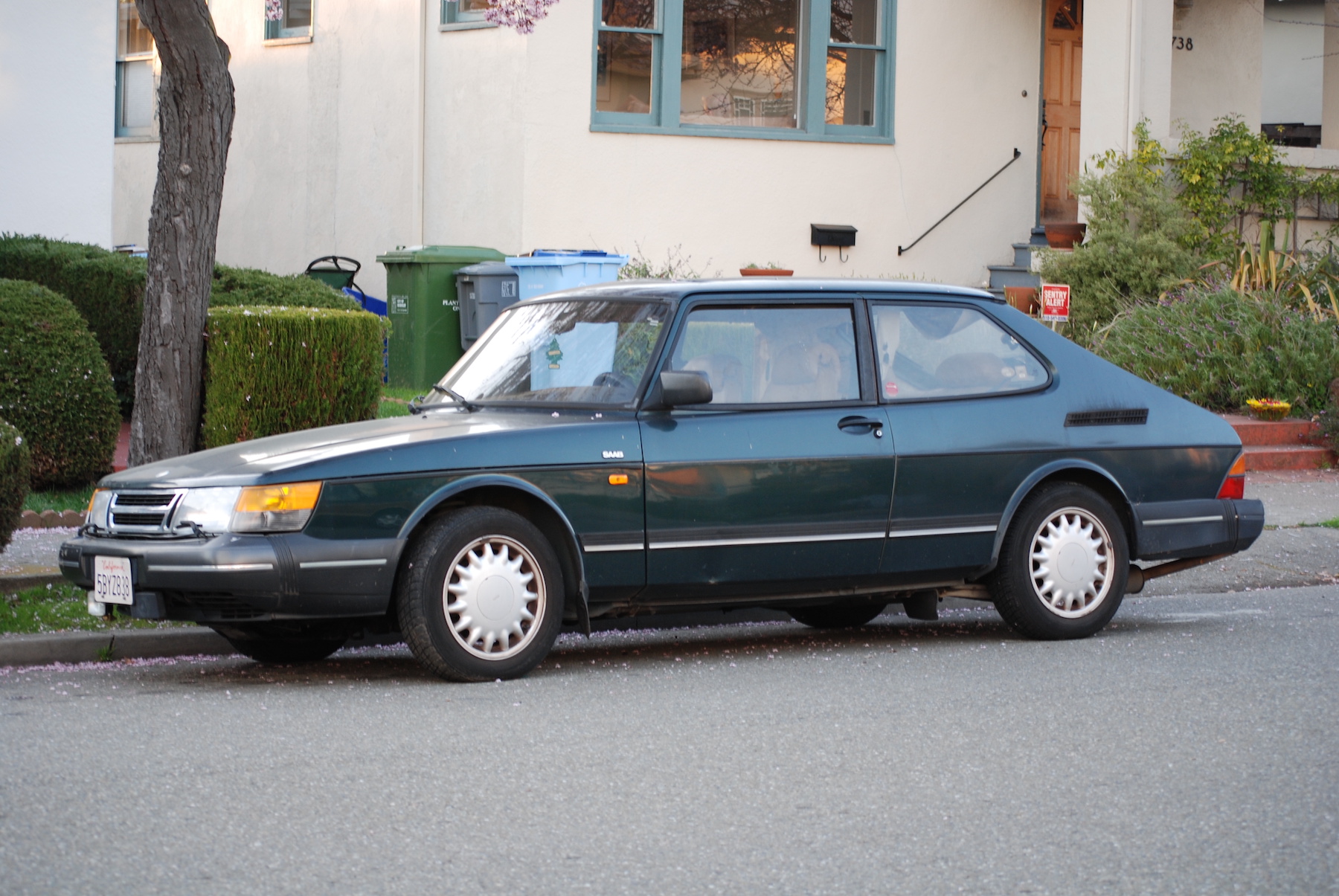
Riding a motorcycle was just one of those things that I figured I would do someday, but I somehow never got around to it. One of my uncles had told me he would give me his old Honda 350 that was sitting in his backyard when I turned 15, but my parents managed to dissuade him before my 15th birthday. Probably a good thing overall since I probably would have rode it like I drove back then, and there’s a good chance I wouldn’t have made it to adulthood.
It wasn’t until 2008 when I started dating my wife, a seasoned and enthusiastic rider, that I knew it was time. I began by taking the California MSF Basic Rider Course which I luckily passed the first time through. Then I took the written test at the DMV to get my M1 license, and shortly thereafter, I bought my first bike.

Buying your first motorcycle can be a bit tricky. You don’t want to get something too powerful that will kill you in the first week, but you do want something you won’t outgrow too quickly. All I knew at first was that I wanted a sports bike. I soon ruled out all of the 250cc bikes because I weighed about 185 pounds and I figured they would be too slow. And I ruled out most of the 600cc bikes because they’re just too fast for beginners. The Suzuki SV650 was one of the early contenders, but it was hard to find a used one for less than $3000, an arbitrary limit I set for my first bike. And for some reason I just didn’t like the look of the SV’s front fairing. This didn’t leave many bikes to choose from except for the Suzuki GS500 and the Kawasaki Ninja 500R. The Suzuki is air-cooled, and I didn’t want a bike that was hard to start on cold mornings, so I eventually settled on the 500R.
I managed to find a used and cheap 2003 model with only 1800 miles on Craig’s List, and its dark blue color was slightly less “jet-ski” looking than a lot of the other sport bikes being advertised. It was also in much better condition than any other 500Rs I had seen, looking almost new during my entire ownership. Overall, the 500R was a fun bike to ride, although noticeably archaic compared to the riding experience on my wife’s Yamaha R6S. The suspension had a lot of play and the carbeurated engine made it a little less than responsive when you needed power in a hurry. I put about 2000 miles on this baby before deciding to sell it prior to our move to Texas. I actually got more money back on it than I originally paid, so overall it was a great deal.
My wife bought this bike in 2009 to replace her older Ninja, and this was her primary form of transportation for about 3 years. She doesn’t ride too often since we moved to Texas, though, mostly due to the extreme heat and humidity that make it unpleasant to ride with all of her gear. I take it out on occassion and am in charge of keeping it in running condition until we eventually move to a more motorcycle-friendly environment. While it’s a bit heavy compared to newer bikes, it’s still crazy fast — 0 to 60 in about 3.8 seconds — and handles very well. And it’s a great looking bike too, without all of the Alien-esque design cues that seem to have taken over Japanese bikes since then. The R6S and the Triumph Daytona 675 are among the better designs of the last 10 years in my opinion.
It’s hard to believe this bike is 15 years old. They’re pretty reliable as long as you keep using them, or at least use fuel stabilizer if you’re going to leave one sitting for a while.
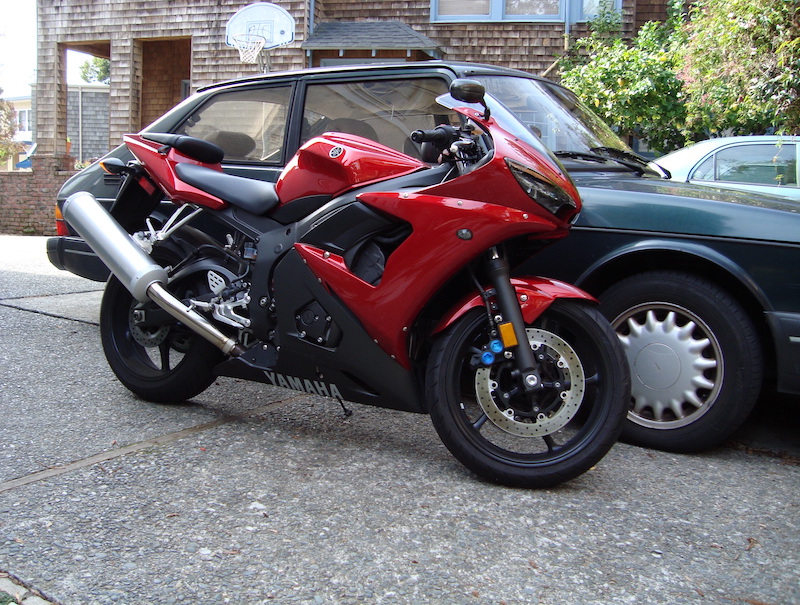
I bought this van to replace my Plymouth Voyager in 2011, and it was fairly reliable transportation for ferrying around our dogs and picking up things too big for our other cars. We drove this car from California to Texas with a car full of animals and my wife’s motorcycle attached to a trailer in back, and it did surprisingly well. With a 2.5 liter V6 producing 250 horsepower, it was no slouch when accelerating and could tow up to 3,500 pounds. That’s not enough for any kind of RV, but plenty for hauling a motorcycle around.
This particular generation of Odyssey did tend to have transmission problems, although the slightly stronger version that came with the towing package has a bit better track record. We didn’t have any transmission trouble during our ownership. The most expensive repair we had to make was replacing one of the catalytic converters, a common problem and expensive repair you’ll have to make multiple times if you want to keep one of these on the road.
This was my daily driver for a couple of years on days when Tracy took the Volvo to work, although I later switched to my Audi A4 as a daily. The Odyysey mostly sat around for a few years unless we needed to pick up or haul something. Cosmetically, it was starting to look a bit shabby with peeling paint in a few spots, although these cars used to be so ubiquitous on the road you almost don’t see them. We kept this van until we moved to Austin in 2019, at which point we replaced it with a 2017 Nissan Pathfinder, a more comfortable and luxurious car that is also a much more capable hauler (see below).

I bought this car as an inexpensive daily driver for my wife after we moved to Texas, and I drove it often on the days she didn’t drive it to work. When I was test driving used S60s, I was initially looking at the more common turbo models with the 2.5 liter 5-cylinder engine. Unfortunately, though, all of the ones I tried seemed to have some early stage transmission issues. The fear of an expensive transmission (or turbo unit) repair lead me to check out the less common 2.4 liter non-turbo entry models. While they’re noticeably slower, you can find ones in good condition for very little money.
I always liked the way this particular version of the S60 looked, with design cues harking back to the old Volvo 122s. And it was always cool to see the pronounced side flanks when looking through the side mirrors. They’re not the most fun cars to drive, of course, but they are supremely roomy with the most comfortable leather seats I’ve ever sat in. And the cabins of these are super wide compared to other cars I’ve owned.
Our S60 was much more reliable than I was originally expecting it to be. The engine and drivetrain were practically indestructable, although there were a few electrical issues over the years. The most expensive repair was to rebuild the front axles, a maintenance headache that can occur to any high-mileage car, but is almost a given on a Volvo. This car had over 182K miles when I finally traded it in on our 2014 BMW 328i in 2017. While the BMW was much more fun to drive, I did find myself missing the higher-quality interior materials and much more comfortable seats of the Volvo. Some day, I’d love to pickup one of the T5 performance versions with a manual transmission.
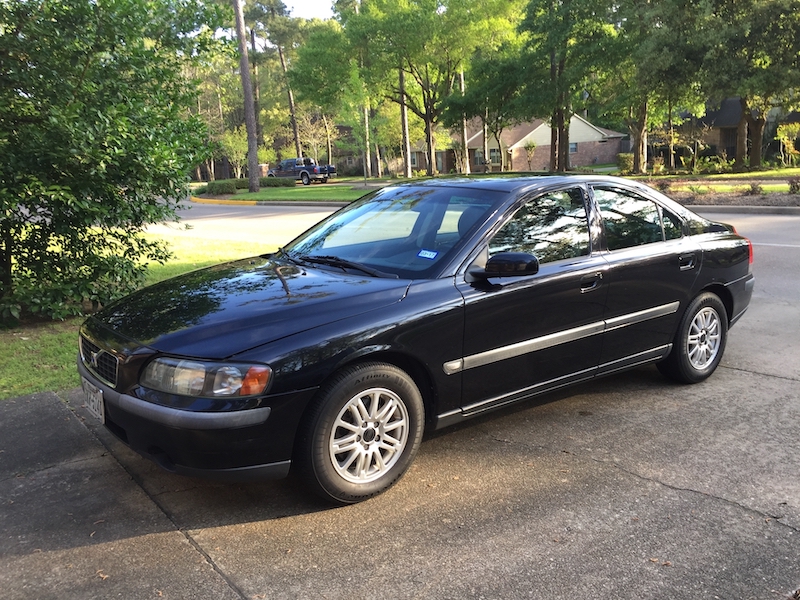
Every year, my company flies me back to the Bay Area for a few days to attend meetings and touch base with my co-workers. While I’m there, I usually rent a car so that I can more easily visit friends and also spend some time driving in the Berkeley hills. Most rental agencies don’t let you pick the exact model of car, but I always try to get something with at least a little bit of a fun-to-drive quotient. In 2015, I lucked out and happened to get a Mini Cooper without even asking for one.
I always liked the look of the Mini, and as it turns out, they’re fun to drive too. Of course it wasn’t the faster Cooper S model, and unfortunately it also had an automatic transmission, but it was still fun to drive, especially through the curves. Apparently, these cars have continued to get bigger and more bloated with every new design since they came out, but the second generation still seems like a small car to me, with a nice go kart feel when zipping through the hills. I’m not sure if it will ever happen, but I’d really like to pick up a used one someday. BMW has made so many of them that they should be easy to find for a long time.
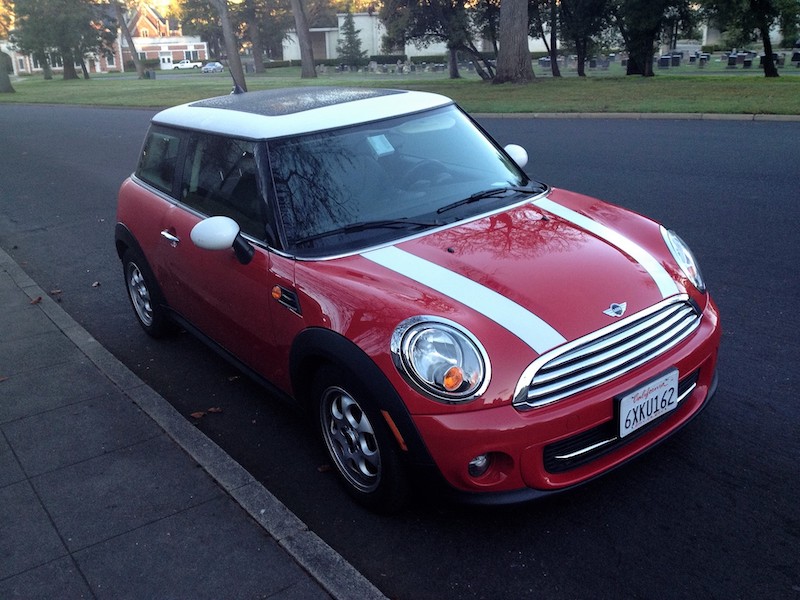
I bought this car for a few hundred dollars several years ago intending it to be a project car, but I quickly discovered that it’s not an easy car to work on. The engine and mechanicals are packed very tightly into the engine bay, so there’s not much space to work, and you always have to remove several pieces to get at anything. Instead of working on it myself, I’ve spent a few thousand dollars at the mechanic over the years keeping it running. So far, I’ve replaced the secondary air pump (twice) along with several parts of the cooling system. Otherwise, it’s been surprisingly reliable for an Audi, although routine maintenance can be pricey. So far, the most expensive fix has been the inevitable timing belt and water pump which unfortunately have to be replaced every 60K or so. With an interference engine, you risk destroying your top end during a failure.
One strange thing about this car is that it vibrates way too much when idling, like you’re in a massage chair that never turns off. I eventually discovered that this is a common peculiarity of 1.8 liter engines, especially if you’ve had any minor fender benders. Our Saab 900 had the same issue with its 1.8 liter engine.
The A4 is not what I would consider to be a “fast” car, but the turbo does allow you to drive quickly, and with a nice little engine noise as well. I wish this one had a manual transmission, but at least it has the Tiptronic automatic that senses when you’re driving more aggressively and shifts accordingly. The Sport mode gives even more power, and of course I can manually shift when I feel like it. It’s not the same as a manual, of course, but it does up the fun-to-drive quotient a bit. I also really like the Quattro all wheel drive, and I notice the difference when I go back to a rear or front wheel drive configuration. This car is definitely a lot more fun to drive than the Volvo was, and while the G35 and 328i were noticeably faster, the driving experience in the Audi is about all I need to really enjoy a good drive.
This is currently (as of 2023) my daily driver, and my wife drives the Pathfinder. While it certainly hasn’t been cheap to keep this car on the road all of these years and 129K miles, it’s been a lot cheaper than an extra car payment every month.
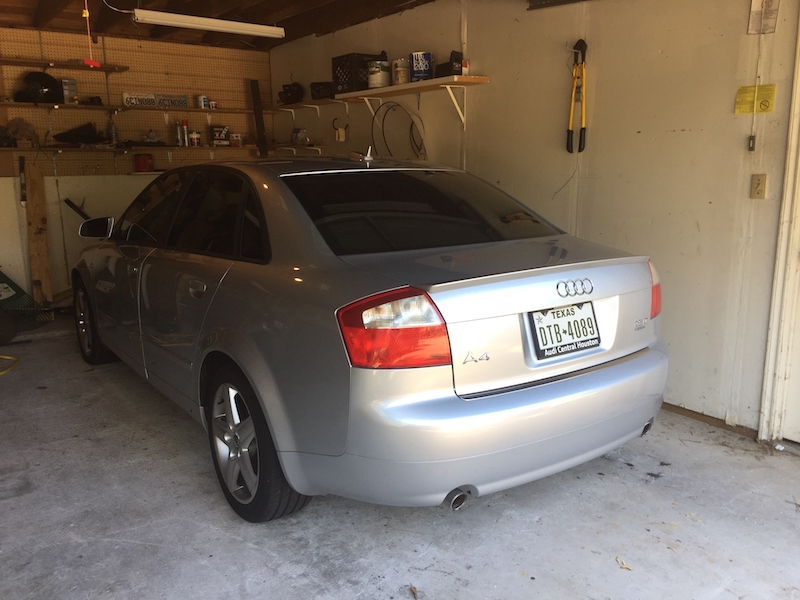
We replaced our aging Volvo S60 with this car in 2017. While I had always wanted a BMW 3 series, I had shied away from the marque in the past because I believed it would be very expensive to maintain one. Sure, you can buy a shiny new Beemer with an extended warranty, but they’re very expensive to purchase new if you want anything besides the most basic options. When I bought my Infiniti G35S in 2008, for example, it would have cost over 10K more to get a new BMW with comparable performance and options. The resale value drops a lot more than Japanese cars — especially once the warranty expires — but that’s partly because they’re not as reliable. So then you’re looking down the barrel of periodic, expensive repairs. Still, I’ve always kept an eye on the 3 series and figured I would lease or buy one some day.
A couple of low-mile Certified Pre-Owned models popped up in my AutoTrader email alerts one day from a dealership in Houston. The nice thing about these is that because they’re certified by BMW technicians, they come with an extended warranty to 100K miles. And the low resale value makes them a good deal. I made an appointment to test drive the one with less miles, but when I arrived, I was informed that the car had just come in the day before and actually hadn’t passed the CPO inspection (despite the advertising). Apparently, a couple of panel gaps were just a little too far out of tolerance. The second one with 35K was still available, though, and it also had a few more options in addition to having passed the CPO. I went for a test drive, and the second I merged onto the highway I knew I wanted to buy it. This was a fun car for a few years, but I eventually sold it after the extended warranty expired due to the high cost of keeping it on the road.
